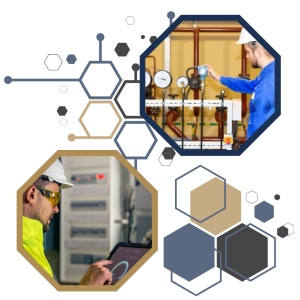Pressure Reversals -
How to Identify and Understand the Potential Implications of Pipeline Integrity
Table of Contents
- Introduction
- Pressure Reversals
- Considerations for when Pressure Reversals have or are expected to occur

Introduction
Pressure testing of hazardous liquid and natural gas pipelines is conducted for various reasons, some mandated in U.S. Pipeline Regulations or Industry Standards, and others elective. Pressure testing is one requirement for establishing maximum operating pressure (MOP) or maximum allowable operating pressure (MAOP). A pressure test can address several integrity threats, including:
- time-dependent threats such as internal corrosion, external corrosion, fatigue cracks, and longitudinally-oriented SCC,
- time-independent (i.e., random) threats such as mechanical damage and outside force damage,
- manufacturing defects, such as longitudinal seam weld defects and laminations, and
- some construction-related defects.
Pressure testing is particularly effective at eliminating longitudinally oriented defects and demonstrating the immediate fitness-for-service of a pipeline.
Given that a pressure test’s potential and sometimes likely outcome is pipeline failure, a test break or leak should occur with the least impact on public safety and the environment. Therefore, pressure testing is conducted with water (hydrostatic testing) to determine a pipeline’s fitness-for-service in a controlled, safe manner. Test failures are more likely to occur when an existing pipeline is tested to a hoop stress level in excess of those in prior tests of the pipeline or the pipe manufacturer’s pressure test in the pipe mill. A major cause of such failures is seam manufacturing defects. Older vintage pipe materials [1] may or may not be a pipeline integrity threat. Still, the potential for them to contain more manufacturing defects than pipe materials made since 1970 and to have properties inferior to the more recent pipe materials is significant. Therefore, test failures may arise with material defects when an existing pipeline containing older vintage materials is retested. Furthermore, in the event of multiple failures caused by cracks in the longitudinal seam weld, pressure reversals may occur.
Pressure Reversals
A defect that fails at a pressure level lower than the highest pressure it was exposed to during a hydrostatic test signifies a pressure reversal. Pressure reversals can be caused by growth during pressurization and subsequent damage to the defect during depressurization due to plastic strain. The pressure reversal size (Pr) can be expressed as a percentage, where:

Pt is the highest pressure level reached at the test site on any prior pressurization during the current test cycle (psig).
Pf is the failure pressure at the test site (psig).
If test failures occur and testing is continued, the possibility of encountering pressure reversals arises. If several pressure reversals occur, estimating the likelihood of a pressure reversal of a given size may be possible. Studies of actual hydrostatic test cases have shown that an inverse relationship exists between pressure reversal size and the probability of the reversal, and the risk of a failure at the operating pressure from a pressure reversal is usually negligible [2].
Considerations for when Pressure Reversals have or are expected to occur
Prior to any pressure test program, past failures should be studied to determine if pressure reversals have previously occurred, and contingency test plans should be developed [3]. During an ongoing pressure test, information on failures should be studied as they occur for evidence of pressure reversals and their sizes compared to the margin of safety between test pressure and operating pressure. A test terminated by a rupture should not be considered the final test. This circumstance could lead to a pressure reversal upon returning a pipeline to service.
Kiefner has extensive experience estimating the probability of pressure reversals of a given size, as well as supporting and providing guidance to pipeline operators on pressure testing, multiple test failures, and safe operating pressure.
References
[1] Older-vintage pipe is generally regarded as line pipe manufactured at a time when little or no attempt was made to enhance ductile toughness, when the quality and properties of longitudinal seams often were inferior to those of the parent pipe material, and no requirement was imposed on the manufacturer for nondestructive inspection of either the seams or the pipe body. In particular, pipe materials manufactured using seam-fabricating processes, such as single-submerged-arc welding, low-frequency ERW, furnace lap-welding, or furnace butt-welding are considered to be particularly more likely to cause hydrostatic test failures than modern materials.
[2] Kiefner, J.F., Kolovich, K.M, and Kariyawasam, S. A Study of Hydrostatic Tests Where Multiple Test Failures Have Occurred. Proceedings of the 8th International Pipeline Conference, IPC2010. September 27-October 1, 2010.
[3] A contingency plan is any predefined alternative to the original pressure test plan implemented after some criteria are met during the execution of the original test plan. Adjustments to the test plan could include changing the target test pressure, test segmentation, or intended operating pressure.

